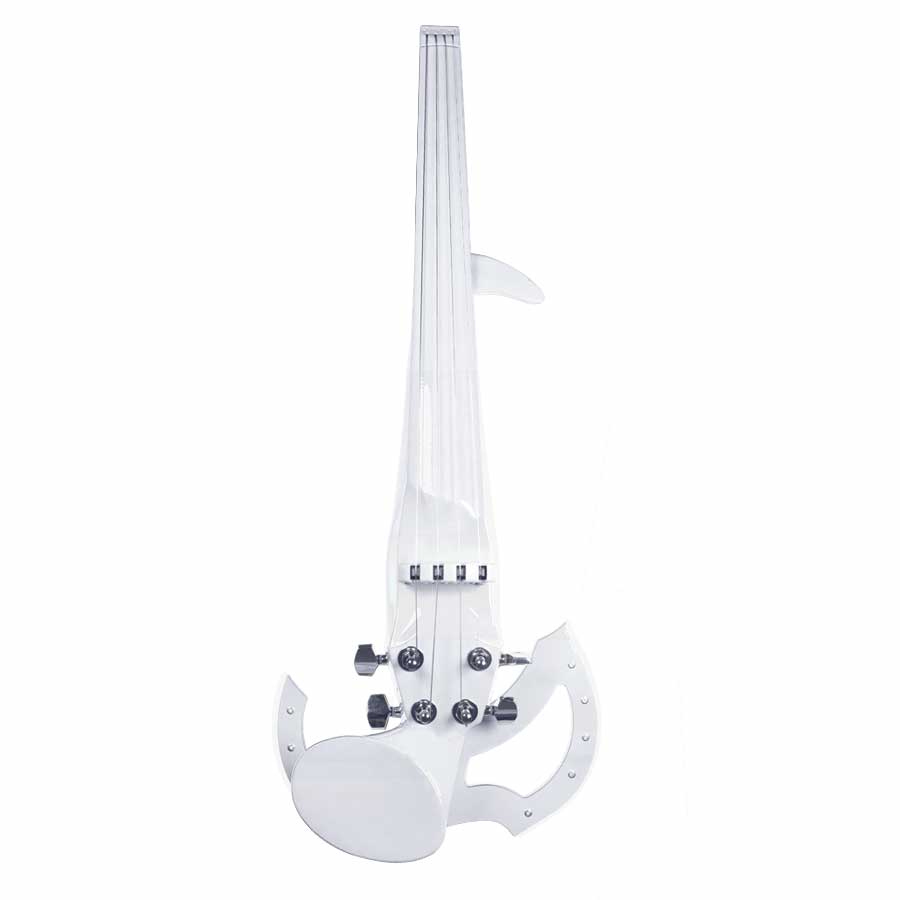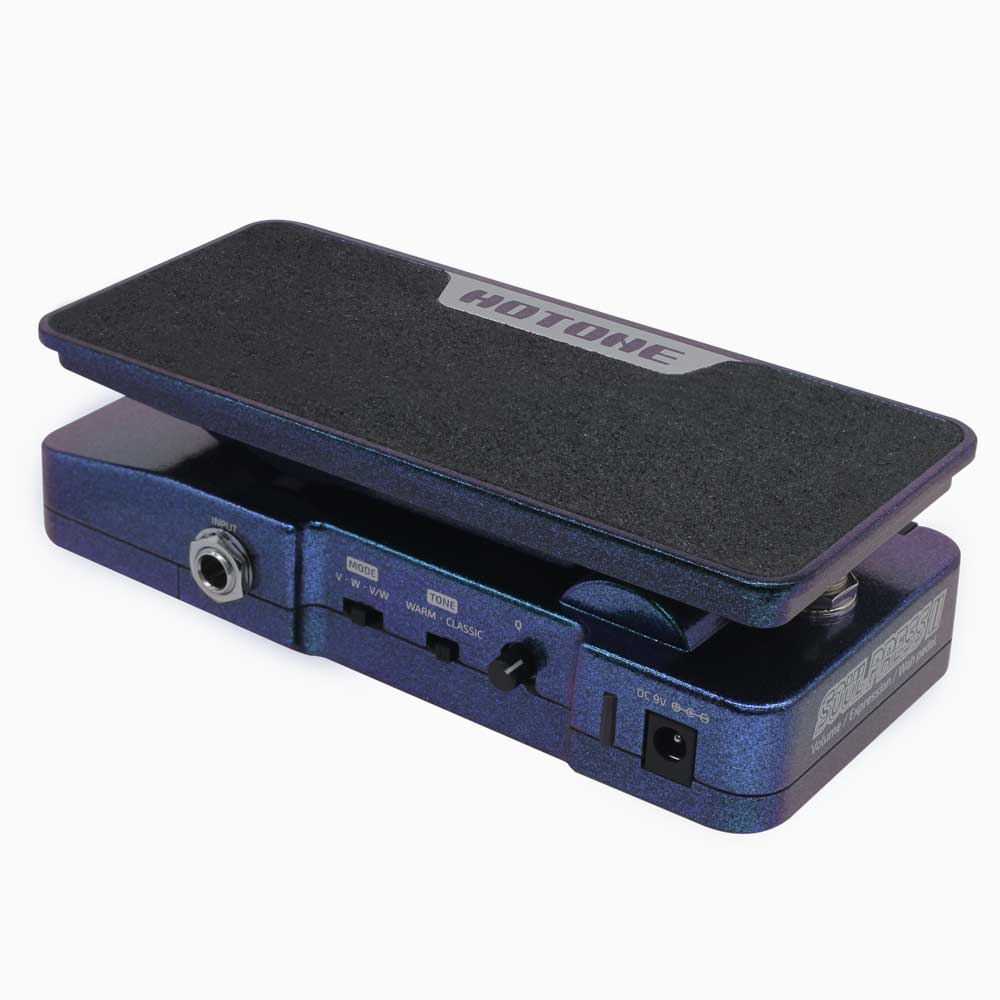A pickup is a system, attached to or permanently installed on a musical instrument, that transforms a physical signal into an electrical signal.
In guitars, for instance, pickups, also known as transducers, capture the mechanical vibrations generated by the strumming of the strings and translate them into an electrical signal that is then sent to an amplifier which in turn transmits it through one or several speakers.
These transducers can be found on a wide variety of instruments including acoustic and electric guitars, basses, mandolins and of course any bowed string instrument.
Why use a Pickup? What is its purpose?
To amplify your instrument
Having a pickup on your musical instrument is essential to amplify its sound so that it can be heard amongst the other instruments playing on stage. If you play with dozens of other instruments, and your instrument does not have an amplification device, you will not be able to be heard by the audience. A pickup is the component you need to add to your instrument so that it can be amplified just like all the other instruments on stage.
To avoid feedback
Is your musical instrument being amplified with a microphone? If so, you’ve probably experienced some feedback issues. However, feedback is virtually impossible with a piezoelectric or magnetic pickup.
To add effects to the sound output
If you want to add effects to your sound using processors, a pre-amp or directly from the EQ of an amp, you must have a way to amplify the instrument. This can only be done by using an amplification system such as a pickup.
To record easily
There is nothing easier than recording an instrument with a straightforward means of amplification. If you have a pickup with a jack plug, you simply have to plug it into an audio interface and start recording.
Pickup VS Microphone
Different sound processing
It is important to distinguish between a pickup and a microphone to understand the differences that exist between the two. The main distinction lies in the way the sound is captured and processed.
On some acoustic instruments, it is actually possible to clip on a real microphone in order to amplify the instrument. The microphone picks up the sound from the vibration that occurs when it travels through the air, and then converts it into an electrical signal that can be amplified by an amplifier. This is essentially the principle behind a microphone.
A pickup does not use the vibrations that travel through the air, but instead the mechanical vibrations it receives when the strings cause the instrument to vibrate. There are therefore two types of sound processing used to produce a similar amplification. This explains why there are errors in the way these two objects are discussed in everyday language.
Different types of amplification
This shift in sound capture (air vibrations vs. mechanical vibrations) causes the sound to have different characteristics. When travelling through the air, the microphone creates the impression that the sound produced is more natural to any human ear. This is because your hearing is used to hearing sounds that travel through the air. Your voice travels through the air to be heard. The sound of your acoustic instrument gets naturally amplified by the sound box because of the air. Your ears are constantly hearing sounds travelling through the air, which is why it sounds so natural.
A pickup captures mechanical vibrations. These vibrations do not travel through the air, but through the body of the instrument. The amplified sound is therefore different from that of a microphone, because the process of creating it is not identical. A pickup produces a more direct, dry and muffled sound. That’s why every musician adds effects to it to broaden it and give it a fuller body.
Frequency Ranges
The technical properties of the two objects are also relevant. A microphone is designed to translate certain frequencies and ignore others. A microphone is made by taking into account its particular purpose. We select the frequency range that corresponds to the instrument that will be using it.
On the other hand, a pickup is an object that captures all frequencies and translates them into a signal.
A microphone can be limited to only those frequencies that you need. A pickup will pick up everything and translate it, with no possible way of sorting it out, except by adding a post-signal electronic component (such as an equalizer that post-processes the audio signal).
Feedback
So far, the microphone may seem a better choice than the pickup. However, it has a huge disadvantage: it is extremely sensitive to feedback. This annoying noise can occur at any time if the microphone picks up any sound that it has already produced through an audio setup. This creates an audio loop that repeats itself endlessly and rises in pitch until the system reaches a point of saturation. This results in a very unpleasant noise. Feedback is the phenomenon that every audio engineer fears and tries to avoid by all means when working with audio for a concert, a conference or a TV set.
By not picking up vibrations in the air, pickups cannot generate feedback. This gives them a distinct advantage over traditional instrument microphones.
A microphone is ideal for studio recording or in small, well-sounding venues with low volume levels. On the other hand, it can be a real nightmare in bars, venues with high reverberation, or rock/pop/metal concerts featuring heavy guitars and drums! In such cases, a pickup is the best option for any instrument!
Which Pickup should I choose?
There are many different models available with different technologies. What criteria should be considered when choosing a pickup model?
What are the technologies and specificities that make up a pickup?
Piezoelectric pickups
A piezoelectric pickup contains one or more piezoelectric sensors. These sensors are able to convert mechanical vibrations into an electric current. Once they detect vibrations, they generate an electrical signal that is sent to an amp via a cable.
They are found in most electro acoustic guitars and bowed string instruments (violin, viola, cello and double bass). The majority of pickup models available for violins, violas or cellos are based on piezoelectric technology (with a few exceptions in MIDI).
Piezoelectric pickups have the advantage of being immune to magnetic fields and can produce a very high impedance.
Compared to magnetic systems, a piezoelectric system produces a very wide frequency range. Piezoelectric pickups capture and retransmit almost all of the frequencies they receive. This wide frequency range may include signals with large amplitudes that could distort the sound produced in inferior equipment. This is one of the reasons why acoustic guitars use different amplifiers than electric guitars. The amplifier must be adapted to your instrument and therefore to its pickup. It is generally suggested that acoustic guitar amplifiers be used for bowed instruments, as both types of instruments use the same piezoelectric technology.
A brief note on impedance
Every electrical device has its own input and/or output impedance. Piezoelectric pickups generate a very high impedance. Conversely, microphones generate a low impedance. The output impedance of an instrument must be taken into account when connecting it to a mixer or any other device. This is why we find both instrument inputs and microphone inputs on mixers and some amplifiers. This is also why DI boxes are placed between the instruments and the mixer. DI boxes match the output impedance of the instrument to that of the mixer’s input impedance. This is known as balancing a line.
Magnetic pickups
A magnetic pickup uses one or more magnets wrapped in a coil of copper wire. The magnet magnetises the metal strings above it. When a string is plucked, the magnetic field of the string is disturbed and shifts, thus inducing an electric current in the pickup coil.
Magnetic pickups require the use of metal strings. They also have a disadvantage: they tend to pick up electromagnetic interference. Therefore, manufacturers use a variety of strategies such as shielding to limit this problem.
Magnetic pickups are used on electric guitars and basses. Most electric guitars have two magnetic pickups: one positioned at the bottom of the neck (referred to as the neck pickup) and the other near the tailpiece (referred to as the bridge pickup). Some models use three magnetic pickups, the third being positioned between the first two. The position of each pickup on the body of the guitar plays a role in the sound produced. Having several pickups on a guitar allows for a wide range of sounds!
Single transducer pickup VS Multiple transducer pickup
A pickup can contain one or more transducers. Many acoustic guitars use a piezoelectric bar pickup. These are small rectangular bars that are placed under the bridge of the guitar. This type of pickup has a single transducer that picks up the vibrations as a whole and then transmits them. Alternatively, there are piezoelectric or magnetic pickups featuring multiple transducers. In this case, they have several piezos or magnets.
Most electrical guitars are equipped with a magnetic pickup with one sensor per string. This means that the magnetic field produced is relative to each string, thus providing a more accurate signal. 3Dvarius piezoelectric pickups have a sensor positioned under each string.
By using multiple sensors, the signal from each string can be separated. These are called divided pickups or polyphonic pickups. These are quite rare, as they require a potentiometer per string to control the intensity of each signal.
A brief note on electric guitar humbuckers
For decades, electric guitars were equipped with single-coil pickups. This means that they had only one coil. On those pickups, magnetic field noise was frequent and disturbing. You could hear that characteristic “buzz” sound known as a “hum”. A Gibson engineer solved the problem by connecting two single-coil pickups in such a way as to oppose each other and eliminate this type of interference.
Nowadays, there are single-coil magnetic pickups, double-coil magnetic pickups (they have a double-width design consisting of two bars of magnets) and double-coil magnetic pickups with a single-coil design (they look like a single coil, but are much taller, as there are two coils positioned one above the other).
The sound of the instruments is shaped by the type of pickup that is used. Humbuckers generate a more “brutal” and powerful sound. They are very popular with guitarists who like saturated effects. Additionally, the elimination of interferences thanks to the double coil is a real advantage when using gain effects (distortion, fuzz, overdrive).
Active VS Passive Pickup
In the world of transducers, we also talk about active and passive pickups. An active pickup has a battery-powered electronic component that balances the signal. Most of the time, the electronic component is used to transform and amplify a weak signal. Without the use of this electronic component, the signal would be too weak to be detected by other equipment.
A passive pickup has no intermediate elements. The signal it produces is generated solely by its components.
Removable VS fixed pickup
The choice between a removable or a fixed pickup is only relevant in the case of acoustic instruments.
A pickup can be fixed permanently to an instrument. Electric guitars and electric violins are examples of this. The pickup is integrated into the instrument, which is itself designed to host it. The vibration pickup system is usually invisible on these instruments. It is either integrated into the bridge or positioned under it. Likewise, the jack output is located in a specific place and firmly fixed.
A removable pickup can be installed and uninstalled after each performance. It can be attached to the bridge through different systems (clips, small corks, sticky pads, etc.) or can be attached to the instrument’s f-holes. The whole thing is connected to a clip-on system on the instrument to which a jack cable or a wireless system is connected.
Sound Concerns When Using a Pickup
The Pickup changes the sound of my instrument, what should I do?
Well, depending on its placement, it can affect the sound of your instrument. Some musicians may notice this when using removable pickups. They are attached to the instrument using alternative means to provide you with a means of amplification. Remember that an acoustic guitar, violin or cello is not designed for electric amplification. It is therefore very important to accept that the sound will be a little different if you want to amplify it.
It is also important to understand that every pickup will sound different. The source of the signal produced depends on hundreds of factors that can change from one instrument and setting to another.
I have trouble with the quality and strength of the sound I am getting, what can I do about it?
The first question you have to ask yourself is: what are the components of your effects chain? Which pickup did you choose? Towards which device is the sound from your instrument being directed?
Some pickups generate a rather weak signal, sometimes hardly detectable. In such cases, you may need an output preamp to boost and improve the quality of the sound. You can also add some effects, like reverb or delay, to make it sound more natural.
You can also improve your sound with an equalizer. An equalizer (EQ) allows you to highlight certain frequencies in the sound you produce, or to eliminate frequencies that are too present or noisy. It is an essential element in a sound system for any musician!
Another device worth considering is your amplifier. Does it have the right quality? Does it correspond to the frequencies of your instrument? Is it adapted to the impedance of your signal? The amplifier is also the source of the sound you hear. Its characteristics are undoubtedly linked to the sound you hear.
I would like the sound of my pickup to be more natural, closer to the sound produced by my acoustic instrument. How can I achieve this?
This is a common question among acoustic instrument players. An electric instrument or a pickup placed on an acoustic instrument cannot produce the same natural sound generated by a sound box. You will have to resort to effects. Try adding some delay and reverb to your signal. Impulse Response files are another possibility for achieving a more acoustic sound.
Sources and pics: Maick Maciel, Simon Weiss, Demetrio Scopelliti and Inspiria Guitars, 3Dvarius, pickup makers










































